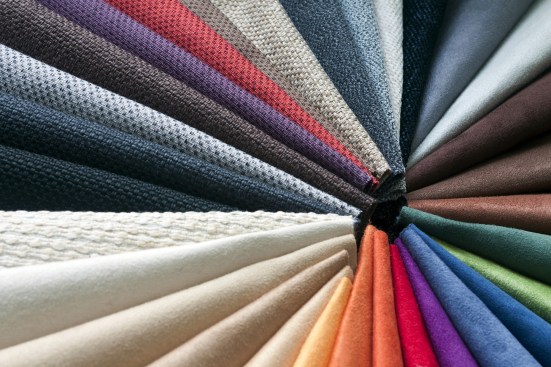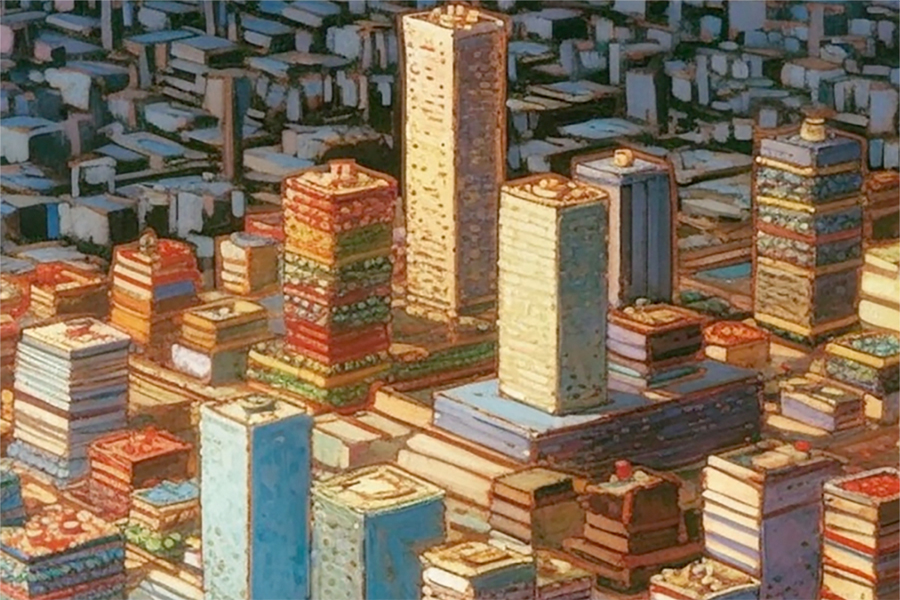
Mason Kirby
A poster for the Edible Architecture Competition in San Francisco
An Edible Architecture Competition Champions Sustainable Foods and Creativity in Design
San Francisco–based architecture firm Mason Kirby will host its first city-wide Edible Architecture Competition on June 10 to celebrate community and creativity and spotlight the importance of sourcing local and sustainable foods. Entrants are encouraged to build an architectural structure such as a house, a building, or a topography using food as materials and structural components. “Mason Kirby Architects hope to inspire across generations, from amateur cooks and cookie-stacking fans to professional bakers and chocolate makers, artists, and designers,” the firm said in a press release about the event.
The competition, scheduled to take place at the firm’s office, will be divided into four categories: professional, including architects, designers, chefs, and bakers; adult; ages up to 12; and ages 12–18. A panel of judges will include cartographer and blogger Burrito Justice; Nilgun Wolpe, president and founder of NY Engineering; Deborah Landis, deputy director of administration at San Francisco Planning; restaurateur Vega Freeman-Brady; artist Jane Willson; Karen Curtis, founder of firm Red Dot Studio; and others. Registration opens on the firm’s website and at the company’s office on June 7. [Edible Architecture Competition 2023]
Safdie Architects Fully Realizes Iconic Habitat 67 Design in Detailed Digital Model
An ambitious concept for affordable housing in 1960s Montreal, architect Moshe Safdie, FAIA’s Habitat 67 design was never fully realized; only a portion of the Brutalist development was built in Canada. Safdie’s original plan, a highlight at the 1967 World’s Fair in Montreal, mapped out a small city comprising residences, shops, office spaces, and a hotel that cost about $45 million to build. It featured prefabricated concrete units arranged in geometric stacks inspired by an Italian hilltop town.
Not able to secure enough funding to complete the project, he built a scaled-down version for $15 million that stands today. “It’s always been a question in my mind: What would it be like if we really had those $45 million,” Safdie said in a YouTube video about a new project to digitally realize his complete vision. “How would it have been as a community? Are there hidden issues we didn’t realize? Would you feel overwhelmed by the scale? Would it be intimate? I didn’t know that, and so this massive exercise of digitizing it into artificial reality, so to speak, is very educational.”
The architect teamed up with Bay Area architectural visualization company Neoscape and North Carolina–based Epic Games, an interactive entertainment company and 3D engine technology provider, to bring Habitat 67’s full glory to life in a detailed digital model. To do this, the existing Montreal building was mapped using drones equipped with cameras and lasers that could measure distances and elevations. The drones flew around the building in preset flight paths, taking 207 scans and more than 4,000 hi-res images. From there, Epic Games used Reality Capture, a photogrammetry software that can create 3D models from images, to create an accurate digital model of the existing building. Neoscape then utilized Safdie’s original plans to fill in the blanks and create the full digital rendering of Habitat 67. [Safdie Architects]
Loewe Foundation Showcases 2023 Craft Prize Winner and Finalists in an Exhbition
The Loewe Foundation—a Madrid-based, private cultural organization by celebrated fashion brand Loewe that aims to safeguard the arts and promote creativity—announced the winner of its 2023 Craft Prize. A jury comprising 13 individuals from the worlds of architecture, journalism, criticism, and museum curatorship, alongside last year’s winner Dahye Jeong, selected Eriko Inazaki for her Metanoia piece: a crystalline sculpture composed of minuscule ceramic parts that shows an “exceptional take on ornamentation in ceramics, the like of which [the jury] has never seen before,” according to a description on the Foundation’s website. Members of the public can view the winner’s sculpture and the works of 30 finalists in the Loewe Foundation Craft Prize exhibition in person at The Noguchi Museum in New York through June 18 or online. [Loewe Foundation Craft Prize]
A Designer Explores the Relationship Between Architecture and Calcium

The Black Hat Press
Indiscernible Elements: Calcium by Korynn Newville
Wyoming-based architectural designer, artist, and environmental activist Korynn Newville wrote her master’s degree thesis on the relationship between architecture, nature, and elemental calcium during her studies at the School of the Art Institute of Chicago, where she graduated in 2020. In her first book Indiscernible Elements: Calcium, to be released widely on May 30 by The Black Hat Press, Newville expands on her early ideas about the intersection of architecture and the essential mineral. “A lot of building materials are made of pieces of calcium,” Newville said in a press release announcing the release of her book. “My teeth are made of the same things as drywall. Buildings are made of bones. These structures are just like us […] By breaking us down to our core elements, we can understand the importance of our connection to the planet. And maybe that will help prepare us to live in a world that is rapidly evolving and changing.” [The Black Hat Press]
The 2023 Venice Architecture Bienanale Opens to the Public
ARCHITECT contributor Annie Howard compiled a list of nine pavilions to check out at the 18th International Architecture Exhibition at the 2023 Venice Biennale, which began May 20 in Venice, Italy. The show, which follows a “Laboratory of the Future” theme, was curated by Ghanaian-Scottish architect and academic Lesley Lokko. Upward of 60 national pavilions from countries worldwide explore timely topics such as affordable housing, Indigenous peoples’ land rights, colonialism, rising sea levels, and the consequences of deforestation—seen in the above Instagram post showing Brazil’s Terra [Earth] installation. The show will remain open to the public through Nov. 26. [ARCHITECT]
Advances in Fabric Technology Bring New Function and Form

Kon/Adobe Stock
New developments in fabric technology are showing the material’s “versatility in design applications,” ARCHITECT columnist Blaine Brownell, FAIA, writes in his latest. For example, he says, “Smart fabrics have long been anticipated to replace portable electronics as effective vehicles for electricity and digital media. However, the fragility of electrical wiring and the need for high conductivity have thus far slowed the development of such materials. Engineers at Pittsburgh’s Carnegie Mellon University have found a promising solution: a novel soft material that transmits power like conductive metals.” [ARCHITECT]
Looking for more tech and culture news? We’ve got you covered.
